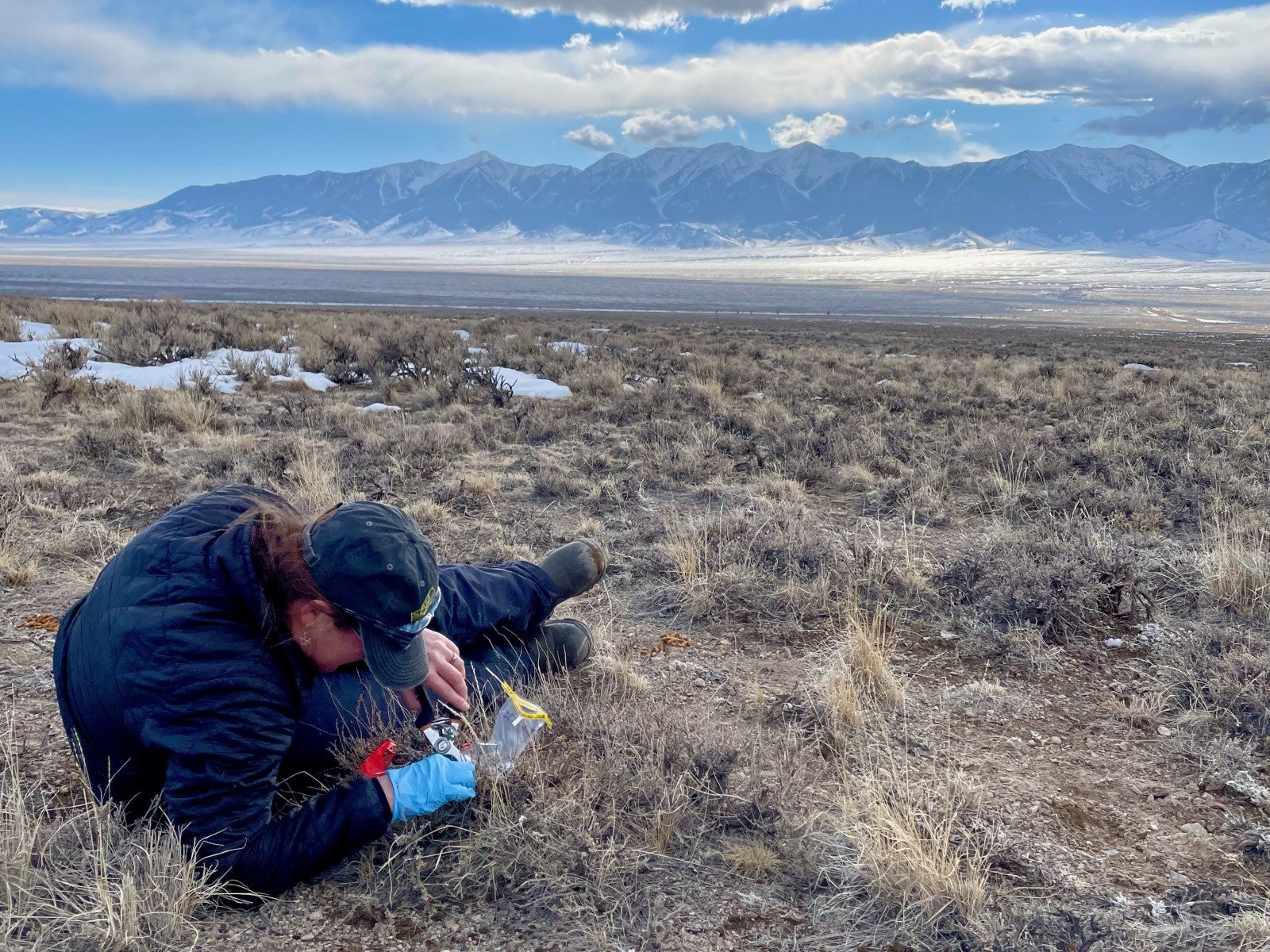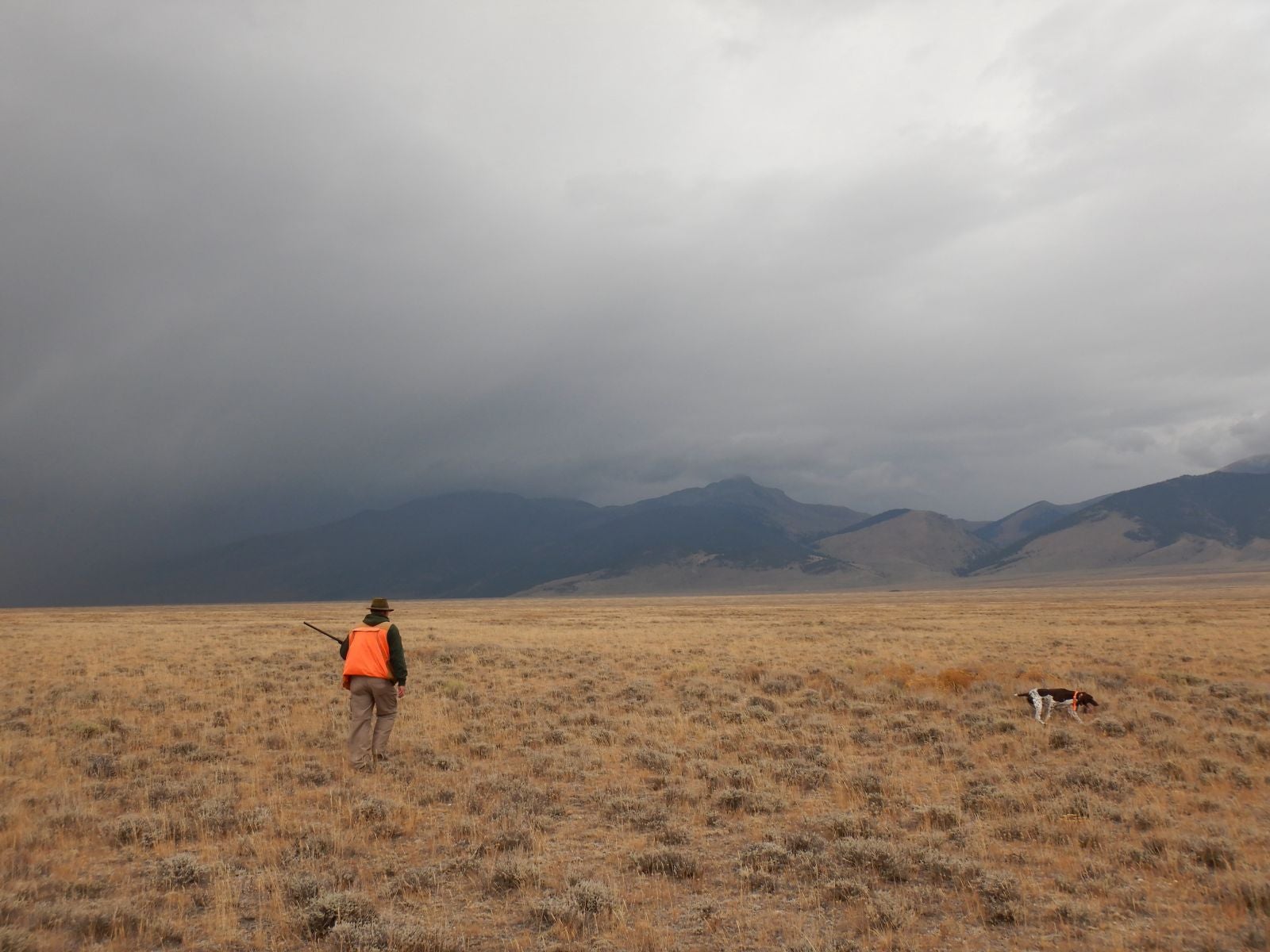
Department of Biological Sciences Professor Jennifer Forbey won the 2025 Jean’ne M. Shreeve National Science Foundation Established Program to Stimulate Competitive Research (EPSCoR) Research Excellence Award.
The award, created in honor of University of Idaho Distinguished Professor Jean’ne M. Shreeve, recognizes accomplished faculty from Idaho universities. Forbey stood out thanks to her work building scientific capacity in Idaho, leading the way on local and international research projects, and mentoring future scientists at Boise State and at partnering colleges and universities.
Forbey studies the interactions between toxic plants and the herbivores that eat them, including some local animals. “The sagebrush that is surrounding us is super toxic,” she said. “It’s loaded with all kinds of chemical defenses.”
Those chemicals, which are apparent in the aroma of sagebrush and visible under certain wavelengths of light, are a defense mechanism that keeps most animals away. “Very few animals will eat it,” Forbey said, “because the plant gives out a bunch of signals, just like a monarch butterfly would advertise that it’s toxic.”
However, no two sagebrushes are exactly alike and two plants, growing right next to one another on the steppe, might have very different levels of toxicity. Savvy herbivores like the greater sage-grouse and pygmy rabbit, both of which Forbey studies, can pick up on the different signals coming from sagebrush plants. They identify the less toxic specimens and feed on those.
These animals also have specialized digestive and detoxification systems that can safely process the toxic chemicals, increasing access to nourishment for the animal. “I work with College of Idaho and other partners to dose animal livers with chemicals from sagebrush [in the lab],” Forbey said, “and measure how quickly they detoxify those different chemicals.”
Understanding toxic plants and the animals that eat them can teach important lessons about pharmacology. Native Americans used sagebrush for medicinal purposes, and therapeutics from the chemicals found in these plants could be derived.

Forbey’s work doesn’t end with groundbreaking research. The 2025 Jean’ne M. Shreeve NSF EPSCoR Research Excellence Award recognizes her accomplishments in building research capacity in Idaho.
“Jen is one of the most altruistic people I know in my profession,” said Marie-Anne de Graaff, associate dean of research and creative activity in the College of Arts and Sciences. “She consistently works to lift up others and advance their career opportunities.”
Forbey best demonstrates these qualities in her work mentoring early-career faculty, postdoctoral researchers and students, but her efforts to build a scientific community don’t end there.
She has made unlikely partnerships here in Idaho, working with ranchers and hunters — all groups that aren’t typically associated with academic research. That includes receiving animal specimens from local hunters.

Hunters who legally collected sage-grouse are used for research and training students in the classroom.
“Hunters will eat the [greater sage-grouse] breast meat, and then they’ll give my lab the rest of that animal to use in my physiology class,” Forbey said. “Students can measure and compare the size of the body, wing and beak of real animals and then open up the bird to see all the organs and think about their function. They get to see what the animal was eating and how their heart, liver and guts are connected. It’s much more engaging than ordering a bunch of organisms from a company where they’ve been processed in formaldehyde.”
Forbey is grateful to the National Science Foundation, the Idaho EPSCoR office and her partners. “Federal and local investments in both basic science and applied science are extremely important for generating the discoveries and workforce that benefit society,” she said. “It’s an honor to be recognized for the work of my team and the impact we’ve had on Idaho.”
The project described was supported by NSF award number OIA-2242769 from the NSF Idaho EPSCoR Program and by the National Science Foundation.